Brescia, Italy-Kurdish artist Zehra DoÄŸan on display with works recounting her experience in Turkish prisons
The Municipality of Brescia and the Fondazione Brescia Musei, directed by Stefano Karadjov, present a solo exhibition of Kurdish artist and journalist Zehra DoÄŸan (Diyarbakir, Turkey, 1989) for the first time in Italy, from November 16, 2019 to January 6, 2020, at the Museo di Santa Giulia.
We will also have better days - Zehra DoÄŸan. Works from Turkish Prisons is an original project curated by Elettra Stamboulis and is the first exhibition with a critical curatorial framework dedicated to the work of the founder of the Kurdish feminist news agency “Jinha” and will be open to the public from Saturday, November 16, 2019 to January 6, 2020. After the great success of the performance organized last May at the Tate Modern in London, the city where Zehra DoÄŸan has temporarily chosen to live her exile, the artist is now the protagonist in Brescia of a powerful exhibition, on the occasion of her participation in the Festival of Peace, organized by the Municipality of Brescia and the Province of Brescia.
The artist’s art intersects and intertwines with her personal story and, inevitably, with the dramatic political events of the most pressing current events. The exhibition sheds light on her poetics, addressing its recurring themes and motifs, highlighting its linguistic complexity and showing the wide range of media and techniques used to produce works of art: unusual objects, extremely fragile, but of great expressive power.
The exhibition conceived by Elettra Stamboulis brings together some 60 previously unpublished works, including drawings, paintings and mixed media works, spanning the artist’s entire period of imprisonment in the prisons of Mardin, Diyarbakir and Tarsus, where Zehra was imprisoned for 2 years, nine months and 22 days on charges of terrorist propaganda for posting on Twitter a watercolor from a photograph taken by a Turkish soldier. This digital drawing showed the town of Nusaybin destroyed by the national army in June 2016 with flags hoisted and triumphant, and armored vehicles turned into scorpions.
Alongside the images are excerpts from the diary written during his imprisonment. These are reflections in which Zehra DoÄŸan repeatedly refers to artists throughout history who have expressed their dissent without paying, at least apparently, the consequences and to those artists who instead refuse to take a stand.
The exhibition gives an account of the irrepressible need to produce and narrate not so much one’s own, but others’ condition with image and word. From newsprint to cigarette packet tinfoil, from everyday clothing to fabric fragments: a very wide range of tools and materials emerges, often linked to the particular contingencies within which the works found life. Any element drawn from the everyday incurs in the creation, such as coffee, food, menstrual blood or the more traditional pastels and inks, when available.
A first section of the exhibition is devoted to stains, forms generated by the random superimposition of material to a support chosen at that moment as the creative surface. From the stains, the artist outlines a symbolic imagery, dominated by the human figure synthesized in the exaltation of some specific components such as the eyes, hands and attributes of femininity. The female figure, as individual individual or collective body, constitutes the second section of this itinerary. A feminist activist and among the first international journalists to have collected the testimonies of Yazidi women who escapedISIS, DoÄŸan devotes the largest part of her production to the representation of women.
The body re-enters political representation with war scenes in which again the predominance of the female presence incurs, underscoring how the first of the battles to be won is the one against patriarchy. Pablo Picasso, that of Guernica and the elaboration of a specific language of despair is, in the artist’s own words, the fundamental point of reference for defining a narrative of pain.
A nucleus of works created after her experience in prison concludes the exhibition.
Zehra DoÄŸan was released from prison on February 24, 2019. Her story as a dissident artist immediately garnered the interest and solidarity of the international art world, so much so that Ai Weiwei wrote her a personal letter and, last year, Banksy dedicated to her the most coveted of Manhattan’s walls, the Bowery Wall, with a work depicting her behind bars, wielding her most powerful weapon: a pencil. Throughout this period, the artist has never ceased her artistic and journalistic activities, making works from reclaimed materials, collaborating with fellow inmates in constructing images and creating a logbook documenting their imprisonment.
The exhibition We Will Also Have Better Days - Zehra DoÄŸan. Works from Turkish Prisons is accompanied by a rich program of in-depth activities for adult audiences, families and schools, curated by the Educational Services of Fondazione Brescia Musei. These events include an open public meeting at the exhibition with the artist dedicated to the memory of Hevrin Khalaf, scheduled for Saturday, Nov. 23 at 4 p.m.
The exhibition is made possible thanks to the efforts of the web magazine Kedistan (“The Land of Cats” in Turkish), which oversaw the rescue and transportation of Zehra DoÄŸan’s works from Turkey and is in charge of the artist’s archive, and Associazione Mirada, a partner in the project.
Special thanks for their sensitivity to the project to Abracadabra Cooperativa Sociale onlus, Associazione Cuochi Bresciani, and Strada del Vino Colli dei Longobardi who will contribute to the opening buffet open to all citizens.
For all information you can visit the official website of the Brescia Musei Foundation. Below are some photos of the works on display.
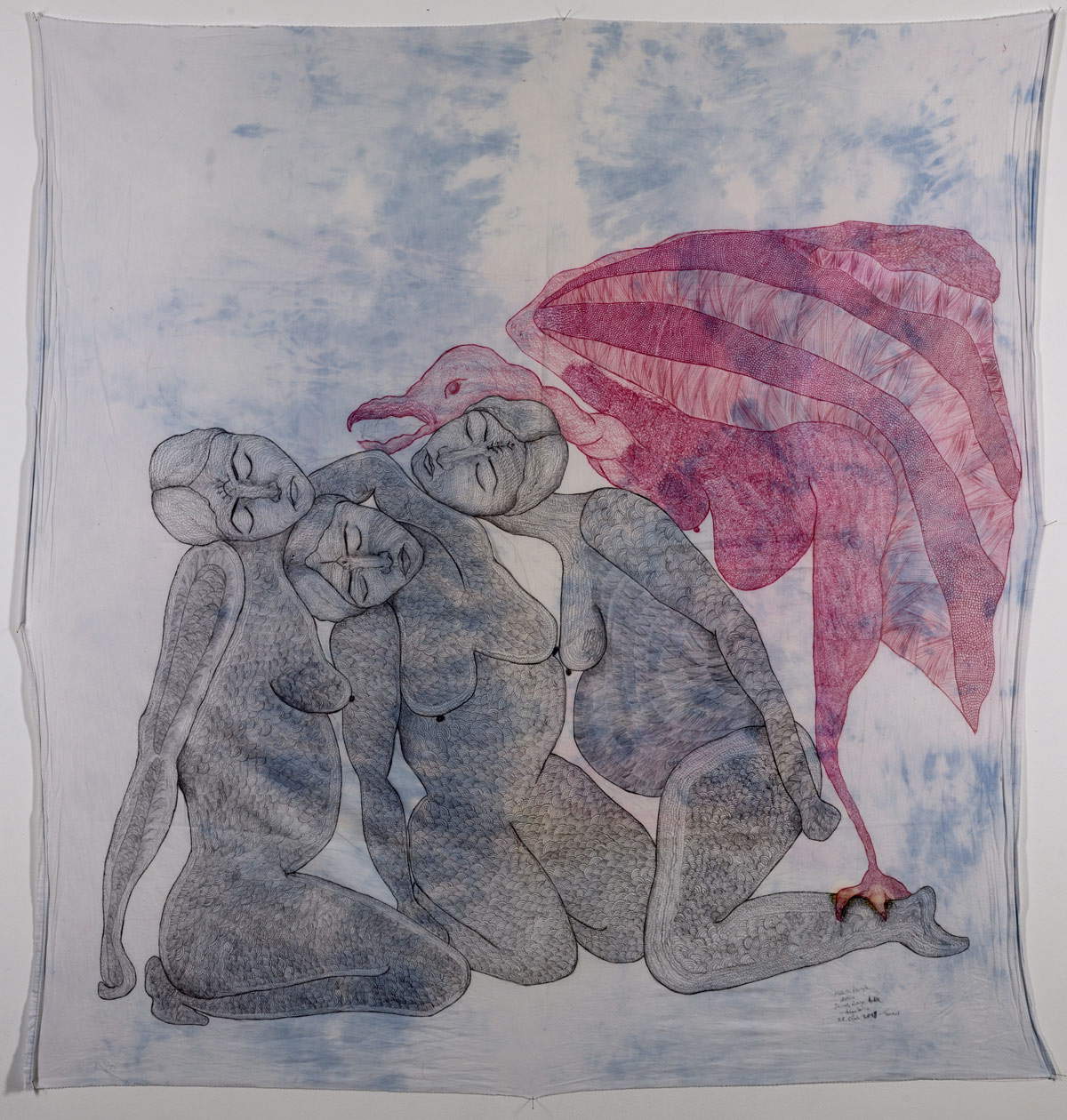 |
| Zehra DoÄŸan, KuÅŸ kadinlar, “Women bird” (2019, Tarsus Prison; ballpoint pen on fabric, 150 x 142 cm). Photo credit: Jef Rabillon |
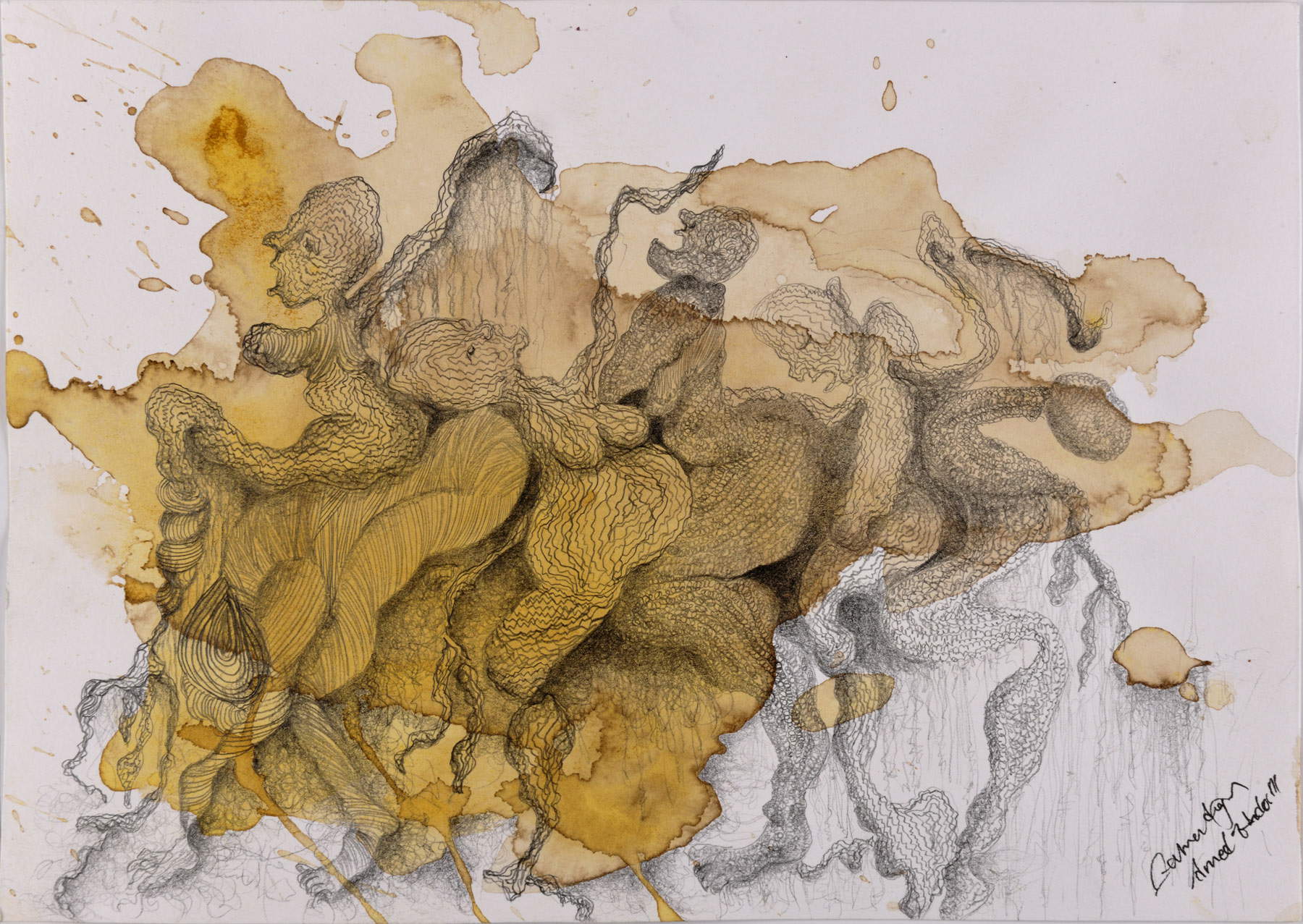 |
| ehra DoÄŸan, Kervan 1, Caravan 1 (2017, Diyarbakir Prison; turmeric, coffee, drawing pen on paper, 21 x 30 cm). Photo credit: Jef Rabillon |
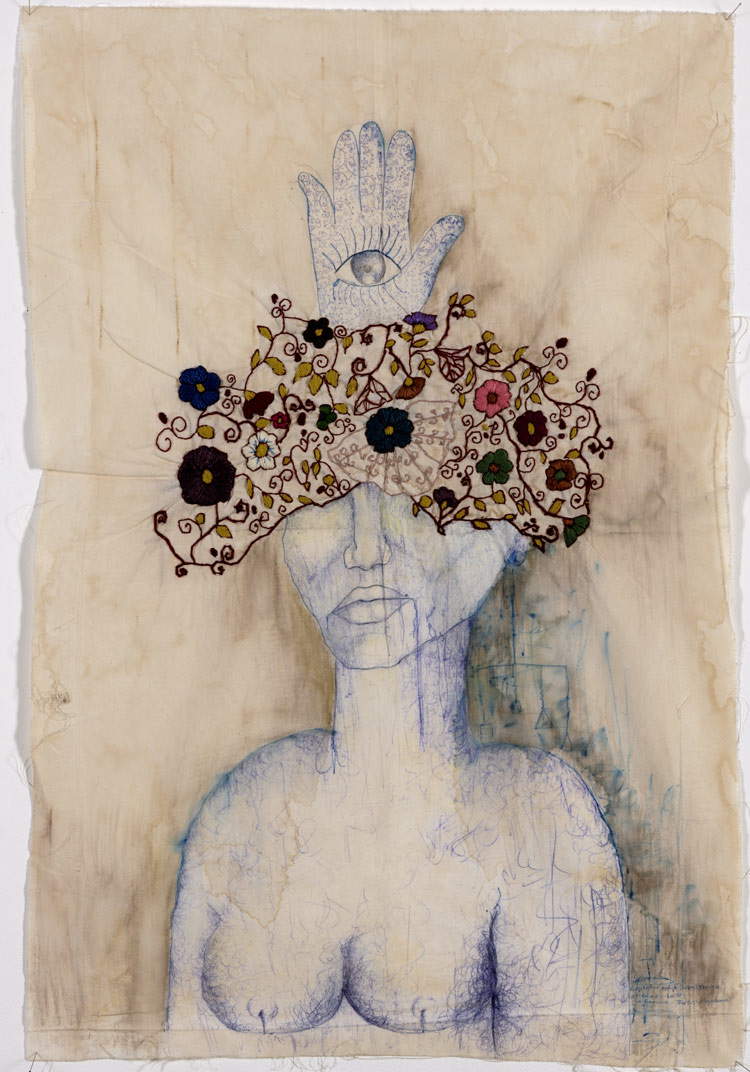 |
| Zehra DoÄŸan, Fatıma’nın Eli, “Hand of Fatima” (November 2018, Diyarbakir Prison; tea, coffee, embroidery, drawing pen on pillowcase, 58 x 34 cm). Photo credit: Jef Rabillon |
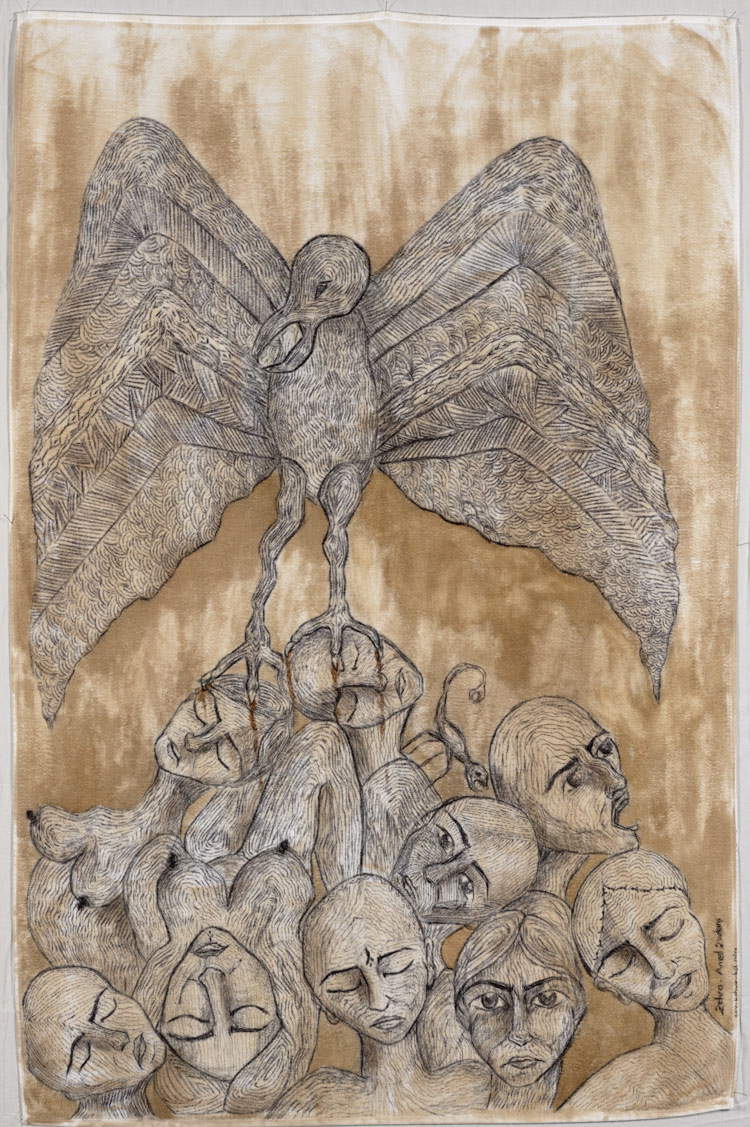 |
| Zehra DoÄŸan, Gever (Feb. 26, 2018, Diyarbakir Prison; ballpoint pen, tea on towel, 146 x 97 cm). Photo credit: Jef Rabillon |
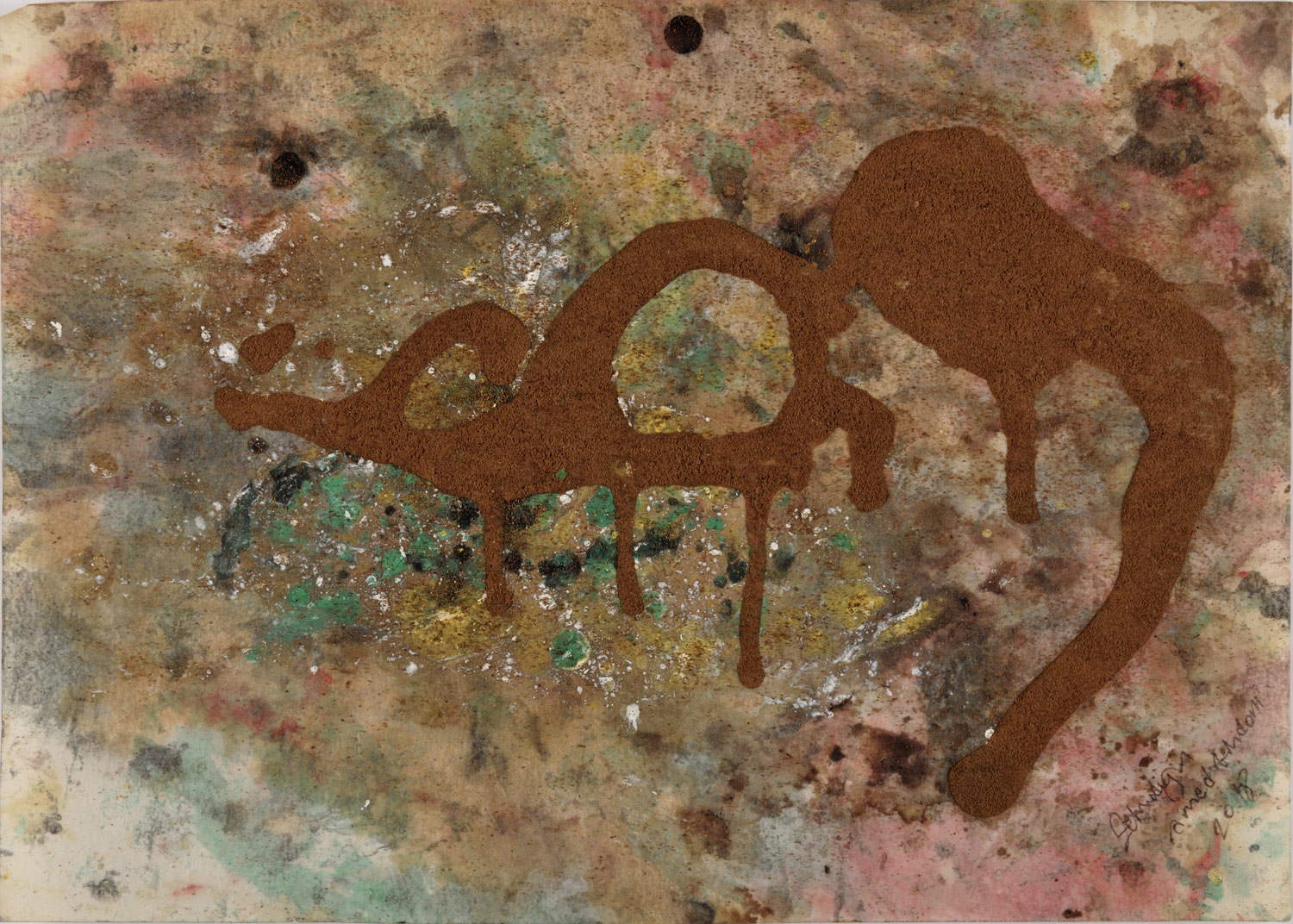 |
| Zehra DoÄŸan, Hayallerim, “My Dreams” (2018, Diyarbakir Prison; edible oil, black pencil, pomegranate juice, clandestinely procured paint on writing paper, 21 x 30 cm). Photo credit: Jef Rabillon |
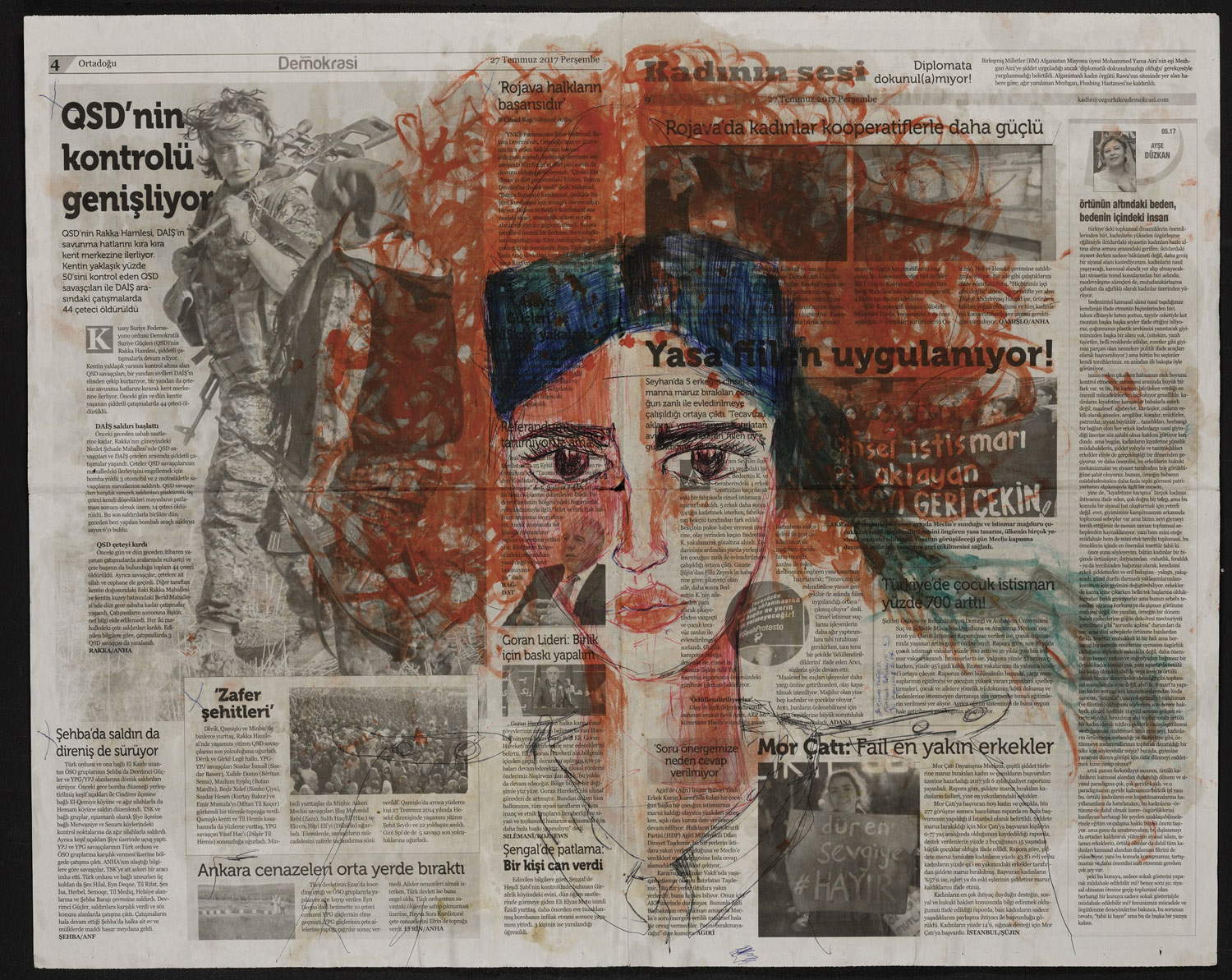 |
| Zehra DoÄŸan, Özdinamik, “Self-Dynamic” (2017, Diyarbakir Prison; ballpoint pen, coffee, turmeric, parsley juice on newspaper, 67 x 56 cm). Photo credit: Jef Rabillon |
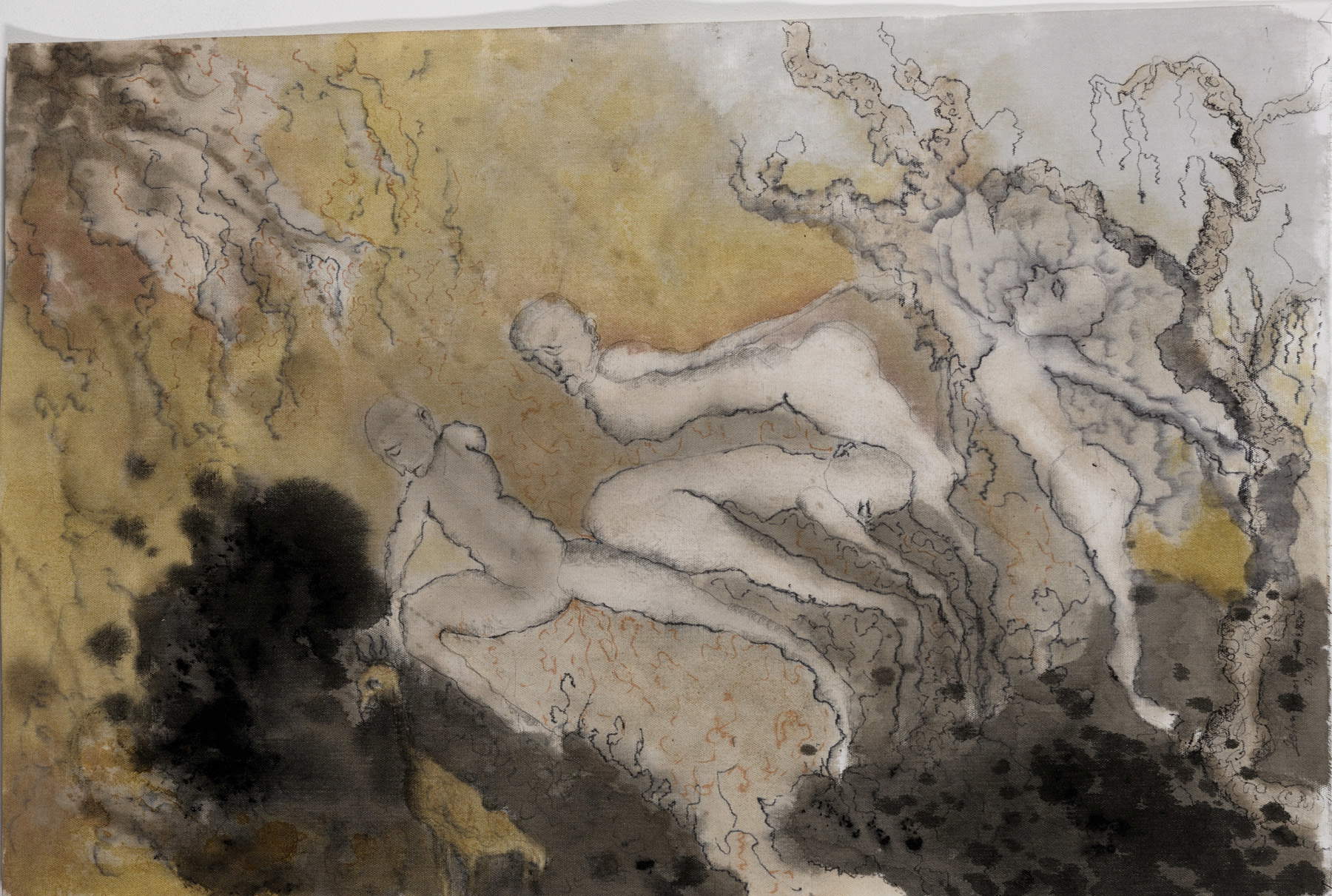 |
| Zehra DoÄŸan, Untitled (2019, London; natural blends on canvas, 77 x 50 cm). Photo credit: Jef Rabillon |
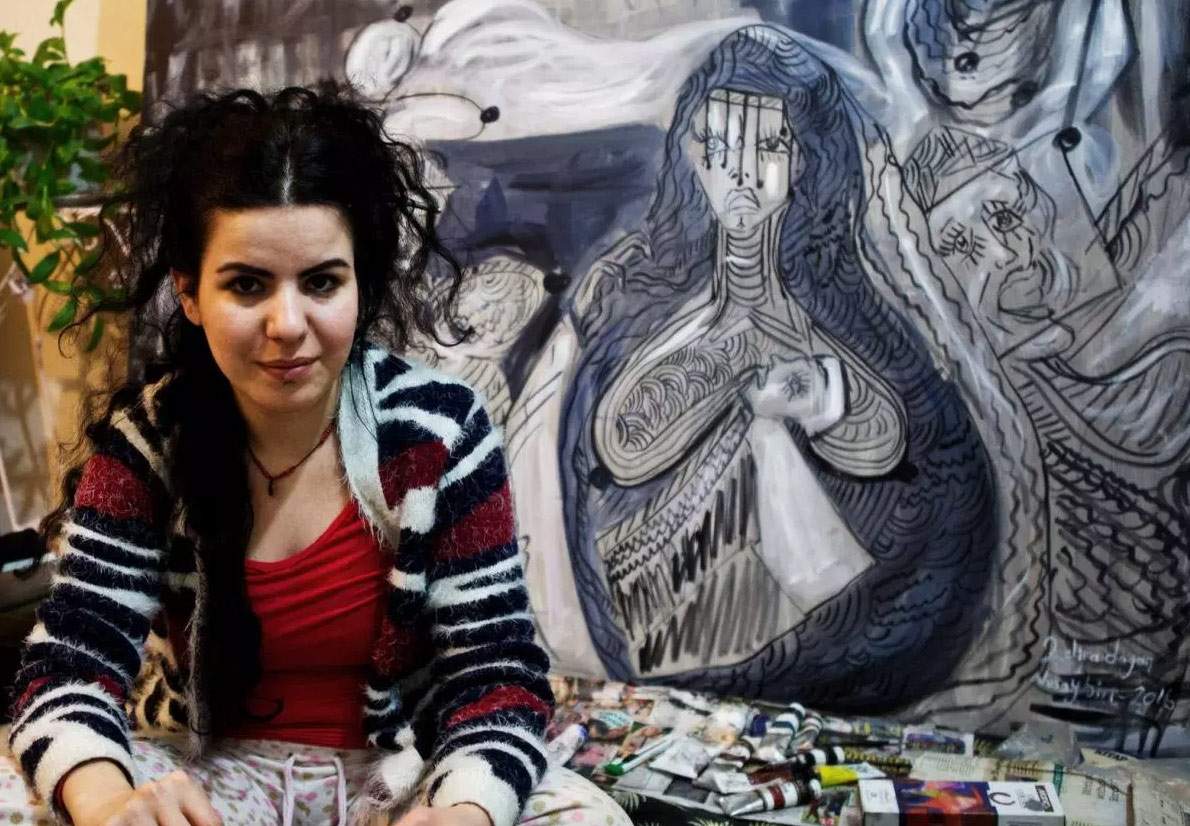 |
| Brescia, Italy-Kurdish artist Zehra DoÄŸan on display with works recounting her experience in Turkish prisons |
Warning: the translation into English of the original Italian article was created using automatic tools. We undertake to review all articles, but we do not guarantee the total absence of inaccuracies in the translation due to the program. You can find the original by clicking on the ITA button. If you find any mistake,please contact us.





























